- Home
- Knowledge Base
- Sections of The Novel Factory
- Characters
Characters
Overview
The Characters section is where you can create and keep track of your characters, using visuals and prompts to bring them to life.
You can view all of your characters as a group, and you can open up individual characters to view and edit them in detail.
You can get to the Characters section by clicking the option in the left-hand menu with the icon of a little person.
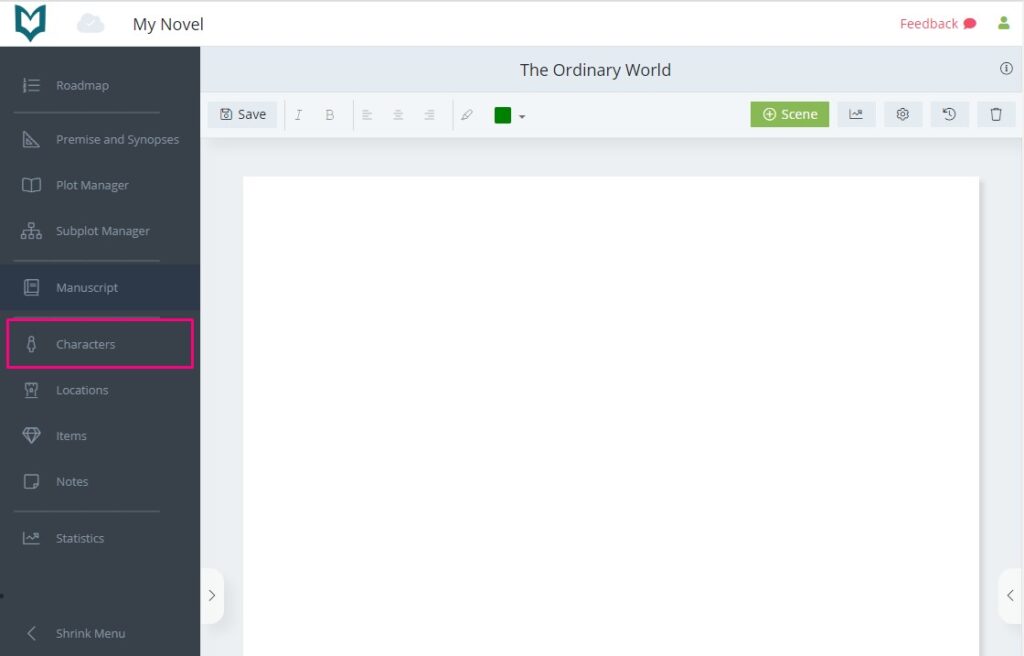
Character Cards Overview
When you first go to the Characters section, the main area shows an overview of all your characters. Each character is represented by a card, which comprises an image and a brief description.
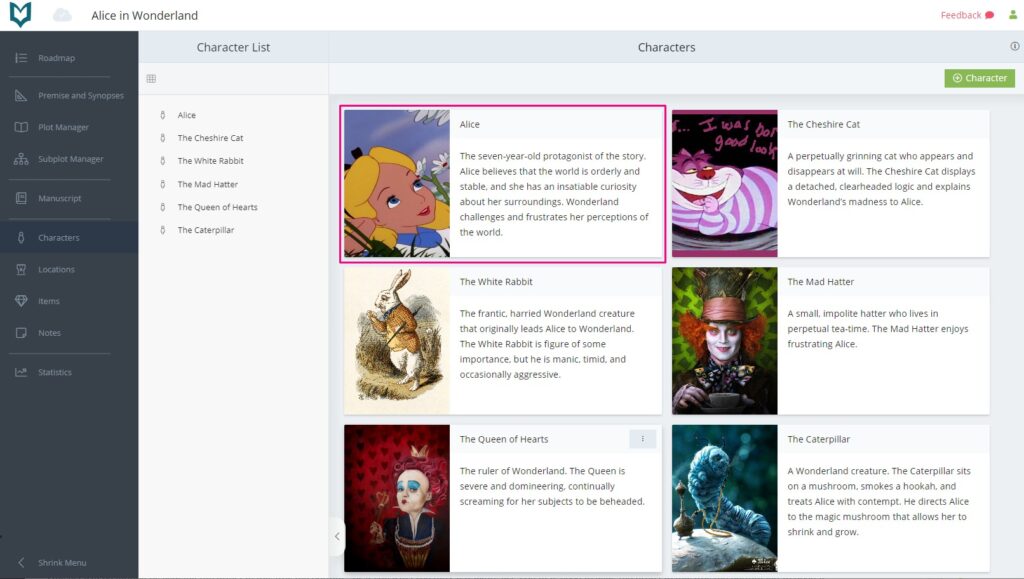
These character cards can be dragged and dropped to reorder them.
To change the character image on a card, simply click on the image and then choose an image from your computer.
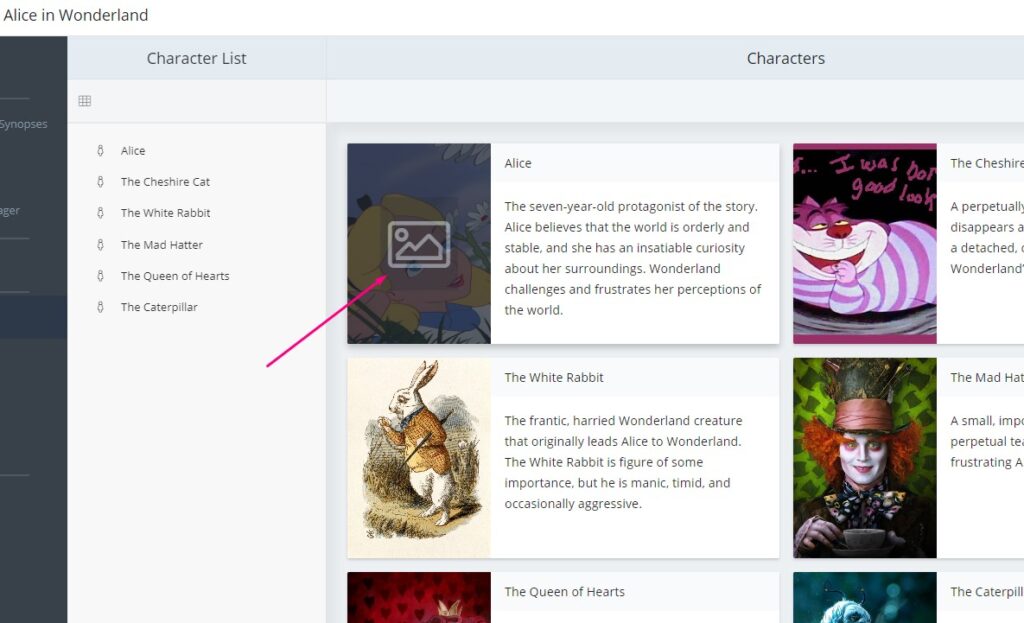
To make further edits to the character’s details, hover over the card to make the context menu button (three vertical dots) appear. Click the context menu, then click ‘Open’. (On most platforms you also have the option to double click the character card to open it.)
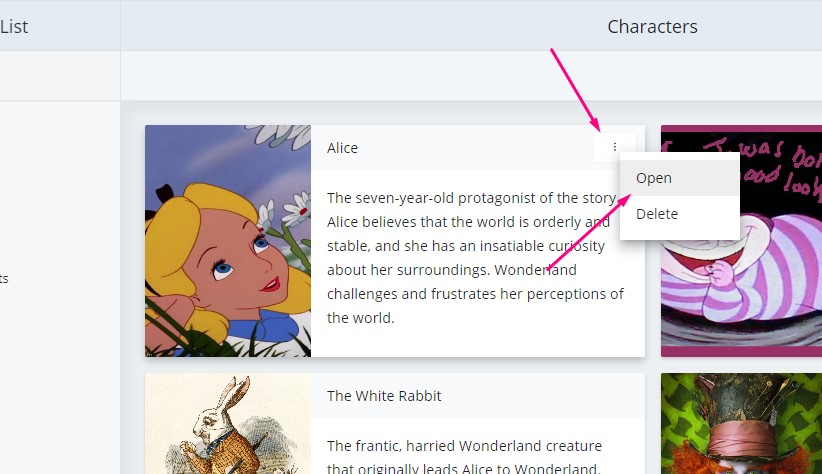
To delete a character, select ‘Delete’ from the same menu.
Character List
On the left-hand side of the Characters section is the Character List. This shows a list of all of the characters that have been created in your novel.
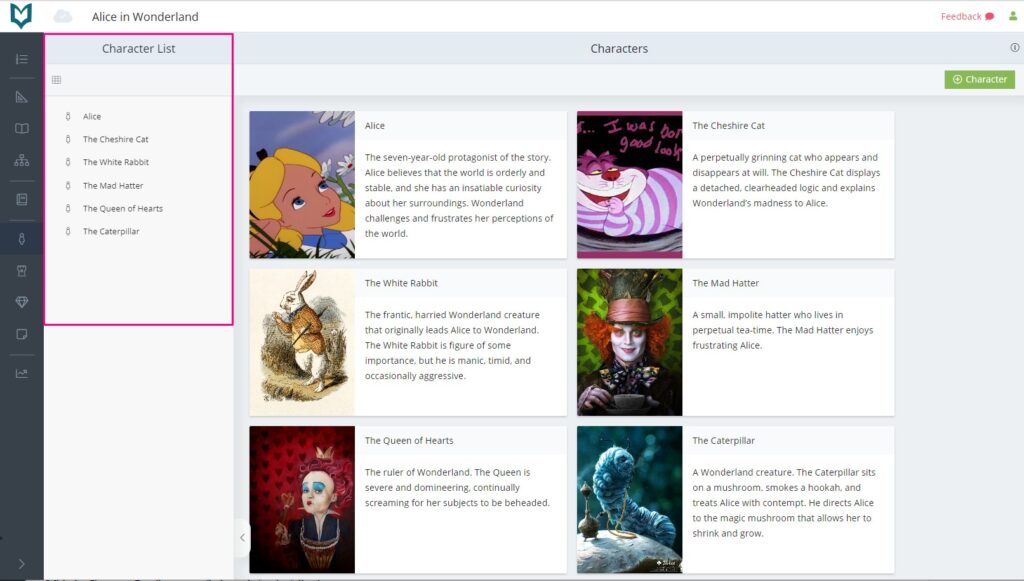
This list can be hidden and expanded by clicking the little arrow towards the bottom.
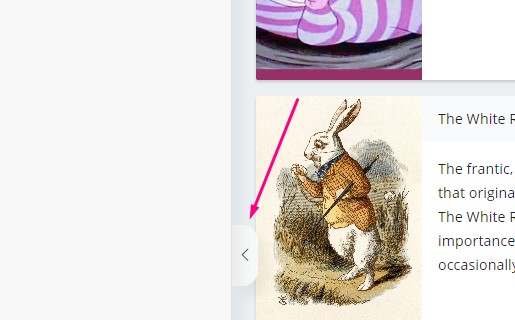
If you click on one of the names in the list, it will open up the details for that character.
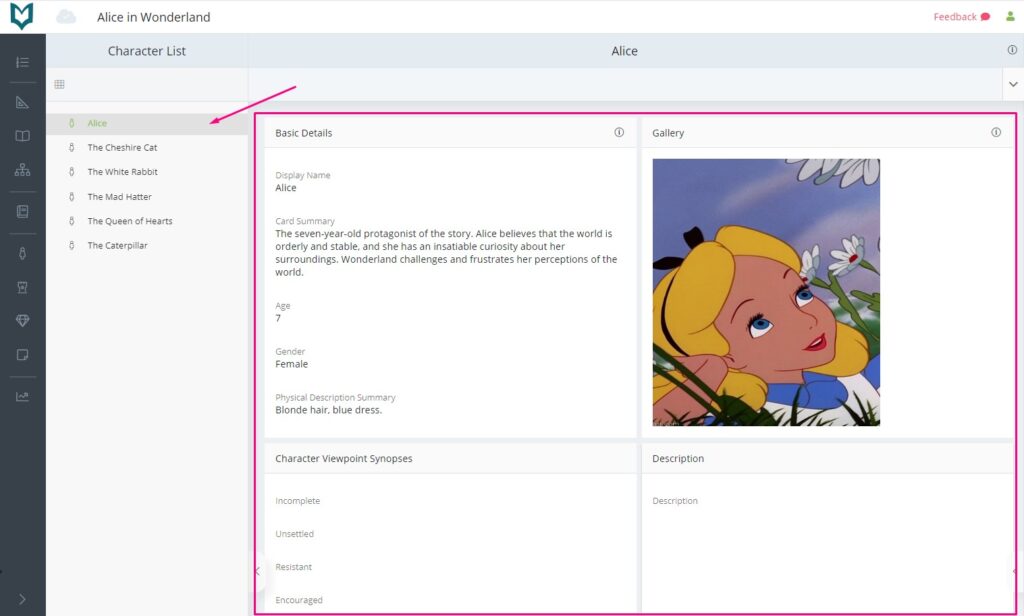
Character Details
Each character can be developed in great detail.
Open up a character by double clicking the card, choosing ‘Open’ from the context menu or clicking the name in the Character List on the left.
If you have the Character List expanded, you can use this to jump between characters without having to go back to the Character Cards Overview.
However, if you do wish to go back to the Character Cards Overview, you can do this by clicking the little ‘grid’ icon in the top left.
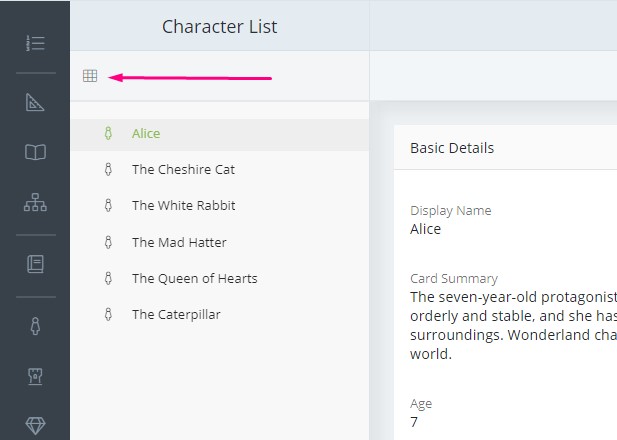
In the Character Details section you will find panels for the following:
- Basic Info
- Gallery
- Character Viewpoint Synopsis
- Description
- Characterisation
- Voice
- Backstory
- Personality
- Physical Appearance
- Friends and Family
- Past and Future
- Love and Relationships
- Conflict
- Word, Education and Hobbies
- Favourites
- Possessions
- Spirituality
- Values
- Daily Life
- Miscellaneous
Editing Character Details Panels
The panels have been designed in a way to give you a huge variety of prompts and guidance, whilst keeping the interface as uncluttered as possible.
For example, most of the panels will initially show you a title, and display a list of the questions which can be found within that panel.
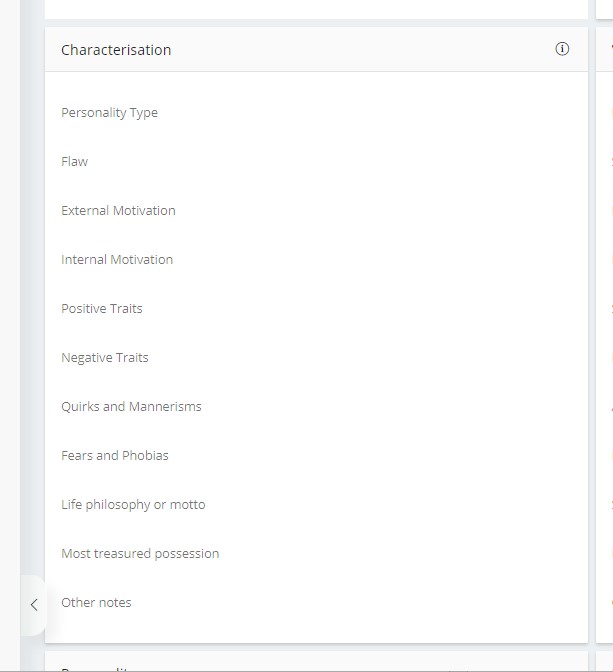
To edit the details of the panel, hover over it and an edit button will appear. Click that button to go into edit mode.
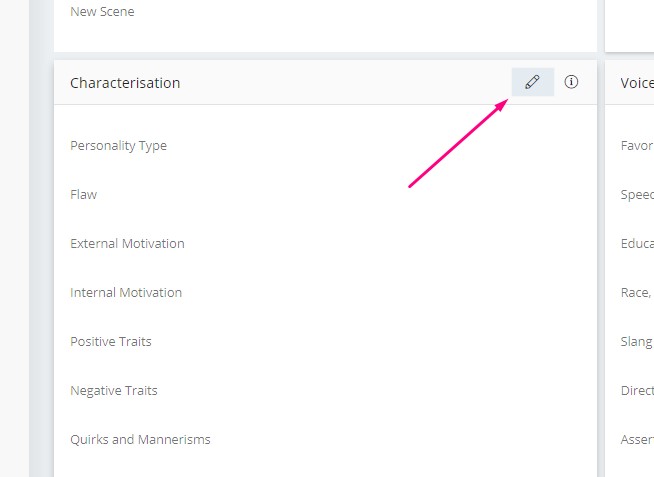
Once you’re in edit mode, the same questions will appear that you saw in view mode, but with spaces to enter your data for that character. The fields can be expanded by dragging down the bottom right hand corner of any given field.
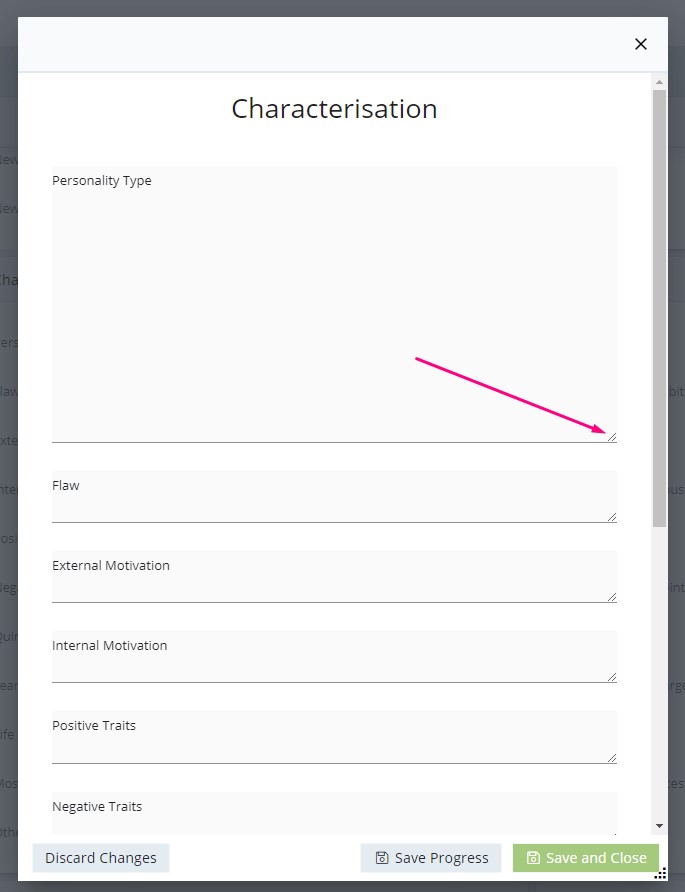
At any point while editing a panel, you can use the buttons at the bottom to discard your changes, save your progress without closing the popup, or save your data and close the popup.
You can enter data for all of the questions, or just a few, as suits you.
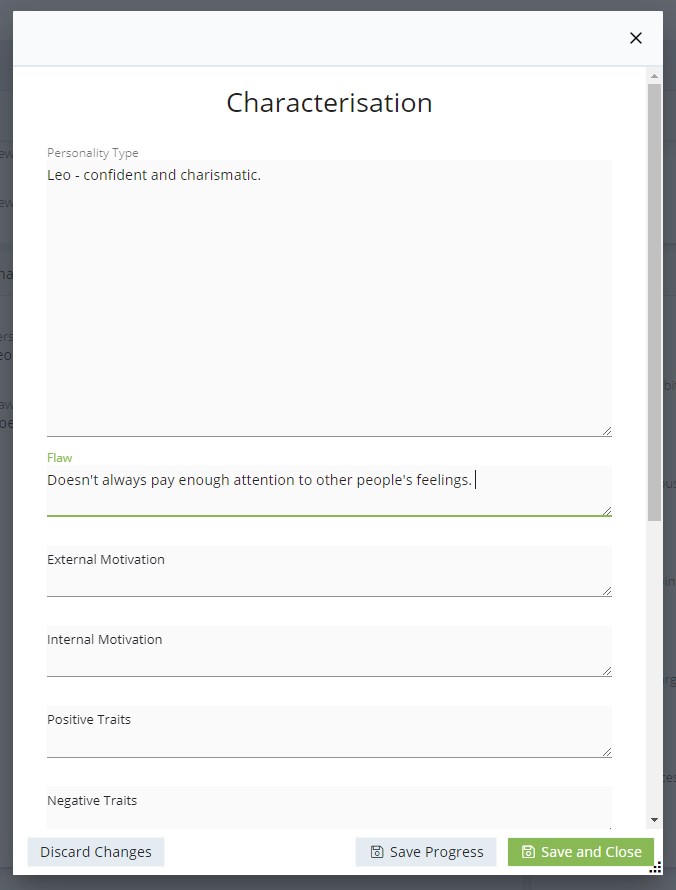
Once you’re done, click ‘Save and Close’. When you have entered and saved the data, what the panel displays changes slightly. Now, instead of showing a list of all of the questions, it only shows the ones you’ve entered data for.
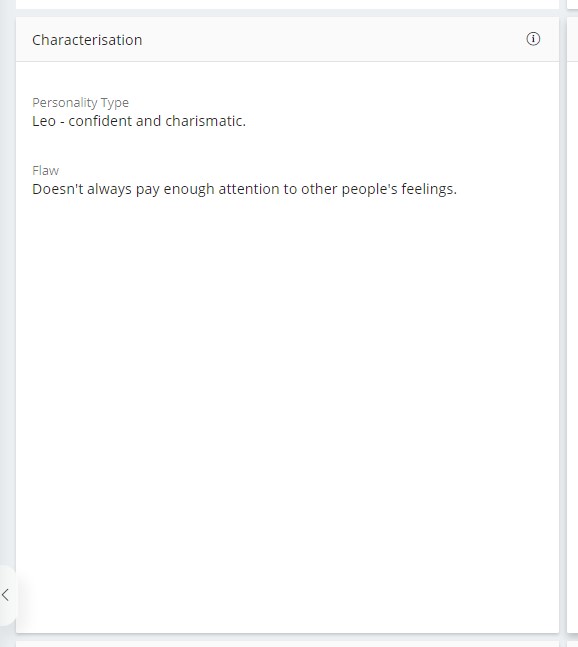
This helps keep the display as streamlined and uncluttered as possible. However, the questions that you didn’t enter data for are not lost. At any time, you can return to edit mode and all of the questions for that panel will be available.
Editing the Gallery
If you have added an image to the character card from the character cards overview, then this will automatically be added to the gallery.
To add another image to the gallery, hover over the gallery panel, then click the ‘+’ button which appears.
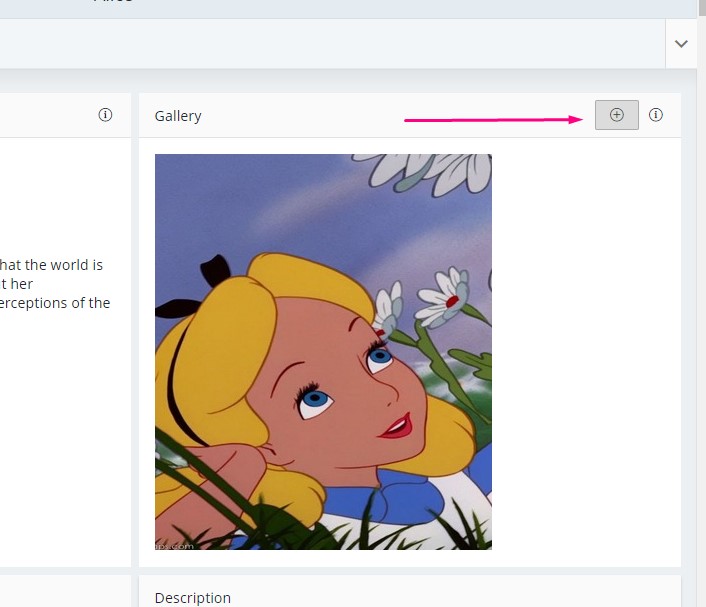
Select your image from your computer, and click ‘open’ and the image will be added to the gallery.
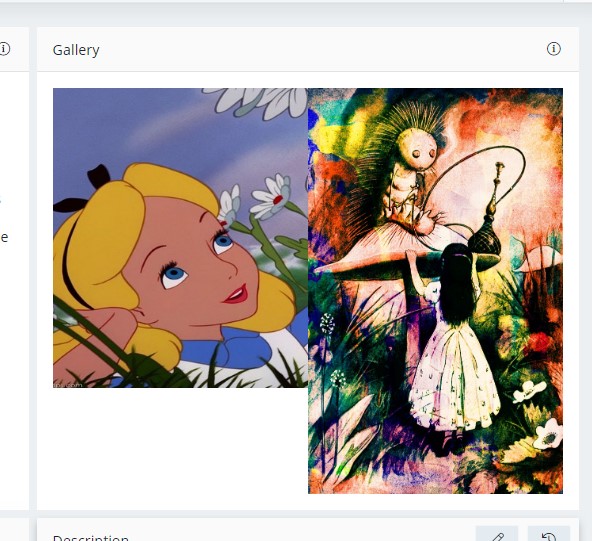
You can change the main image for a character – the one that appears on the character card. To do this, hover over the image you’d like to set as the main image. Click the context menu button (three vertical dots) and click ‘Set as main image’.
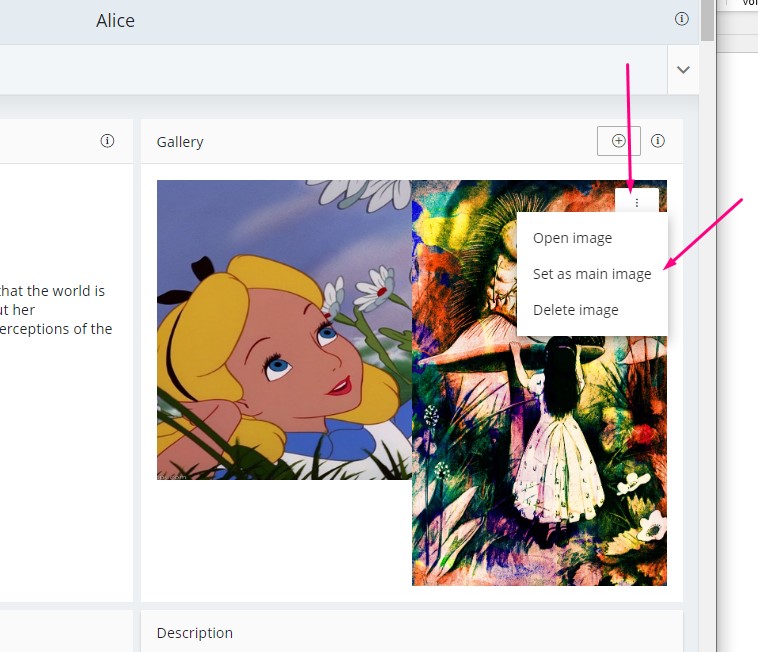
This will not change anything on the character details area, but when you go to the character’s overview, you will see the new image as the main card image.
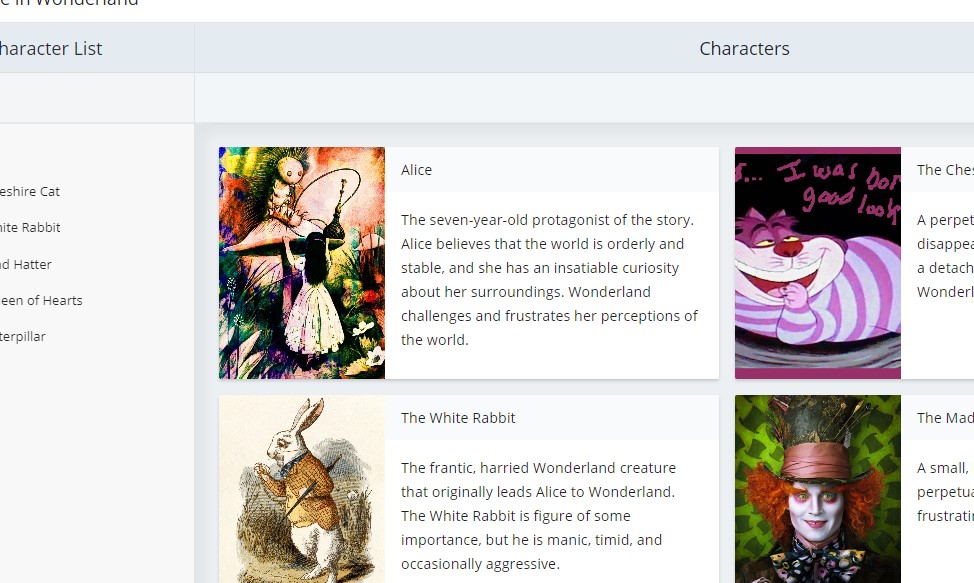
You can delete an image by hovering over it, clicking the context menu button and clicking ‘delete image’.
Character Viewpoint Synopsis
The Character Viewpoint Synopsis panel also works a little differently from the standard panels. You can check out the ‘Character Viewpoints’ article in the Roadmap for more guidance relating to craft and character, rather than technical use of the software.
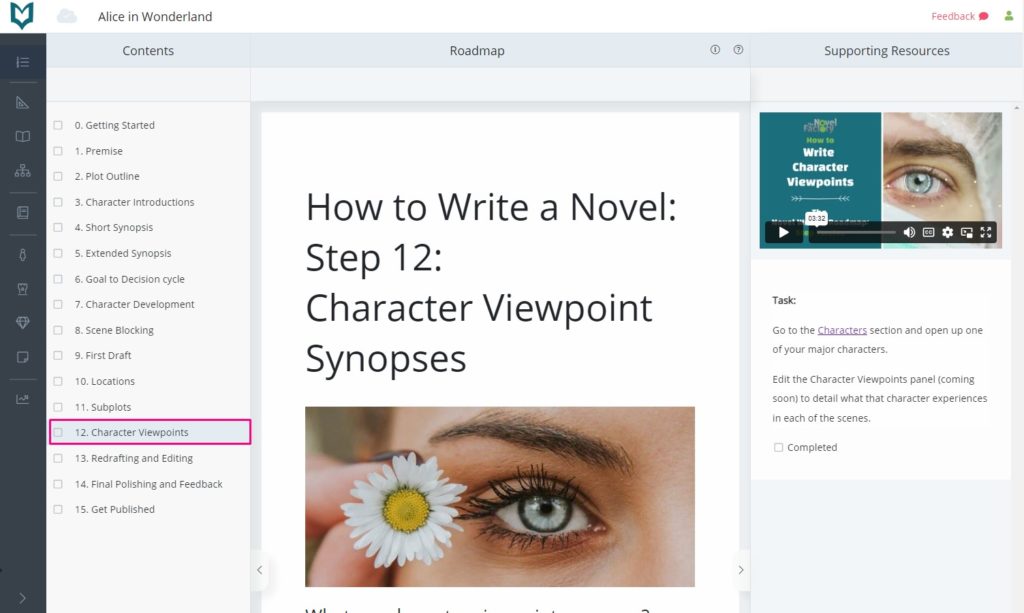
A Character Viewpoint Synopsis is where you follow through your story from the point of view of the characters who are not the main character (or not any of the point-of-view characters, if you’re doing multiple POVs).
This can be incredibly useful for adding depth and realism to your story, creating deeper characters and relationships and offering opportunities for conflict you may not have considered.
The Novel Factory aides you in creating these character viewpoint synopses. To complete one, choose a character and go into their details.
Find the panel called Character Viewpoint Synopsis and click the ‘edit’ button that appears when you hover over it.
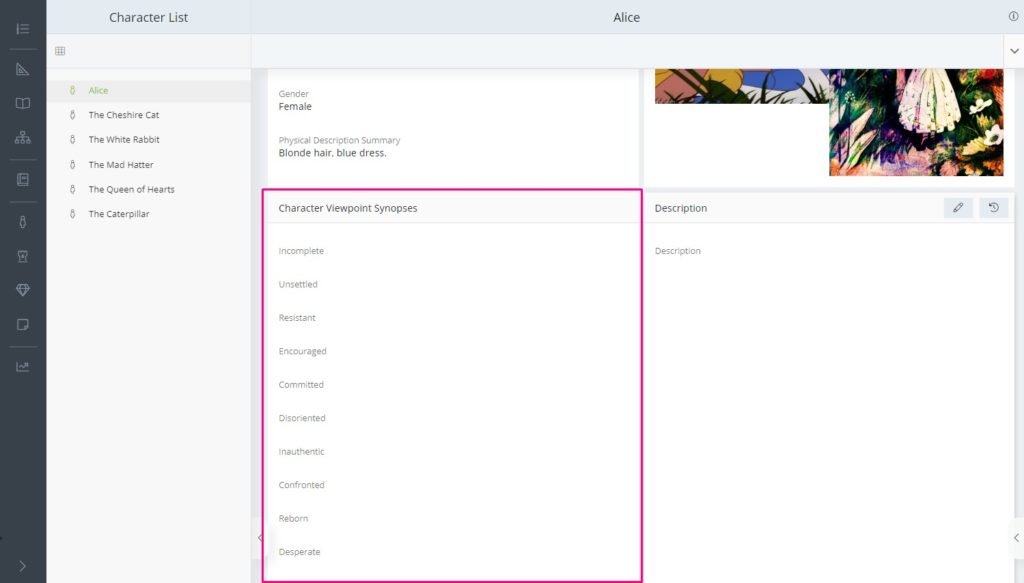
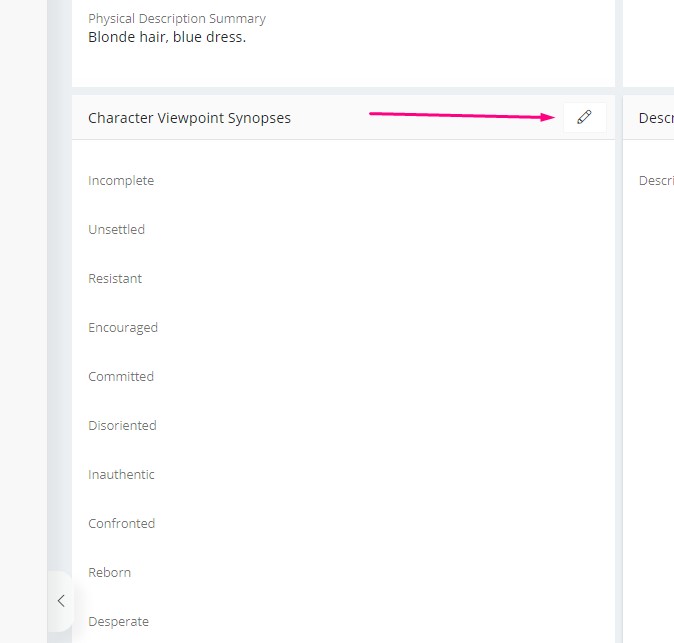
A large pop-up will appear. On the left is a column containing all the index cards of your plot. On the right of each of the index cards is a space where you can enter text.
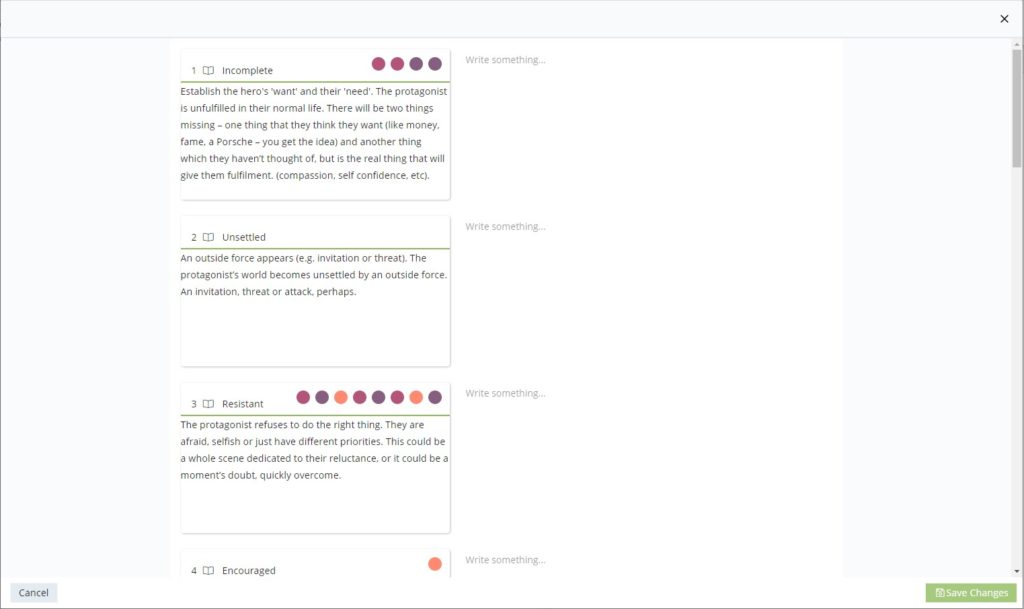
In each of these fields, you simply describe the events of the scene, from the point of view of the selected character.
When you’re done, click ‘Save Changes’ and you will return to the main character details view, where you can read the synopses you have written.
As with the standard panel, in order to keep the interface clean and uncluttered, once you have entered some data, the software only displays the parts you have completed. However, you can access all of the hidden fields by going back into edit mode.
Related Info
The related info side panel can be opened by clicking on the little tab towards the bottom right of the screen. It can be hidden again by clicking on the same tab.
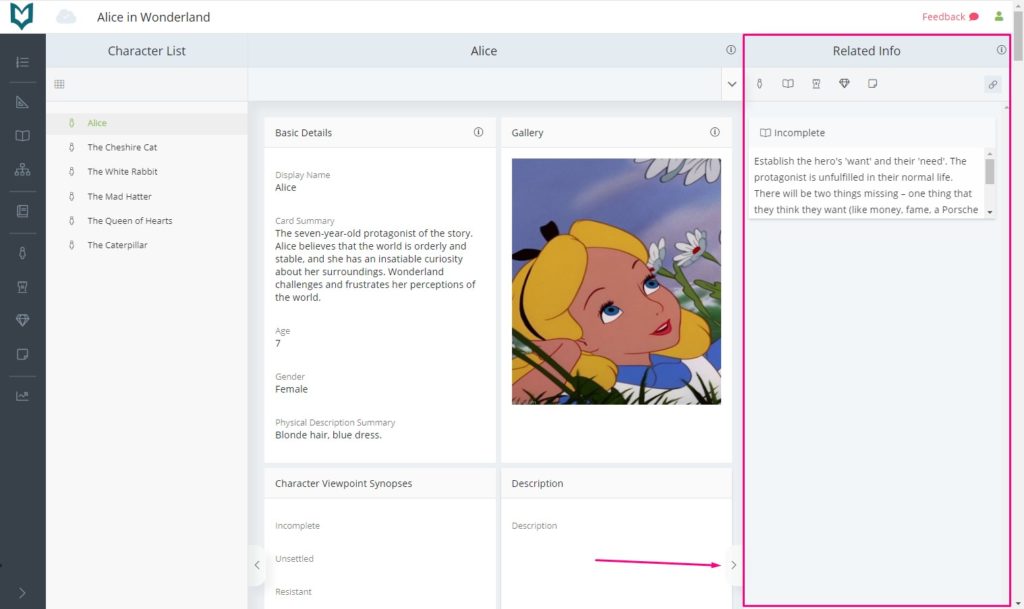
This panel shows all associated information for the selected character.
You can link character to scenes, location, items, notes and other characters. For more information on using the Related Info sidebar, click here.
